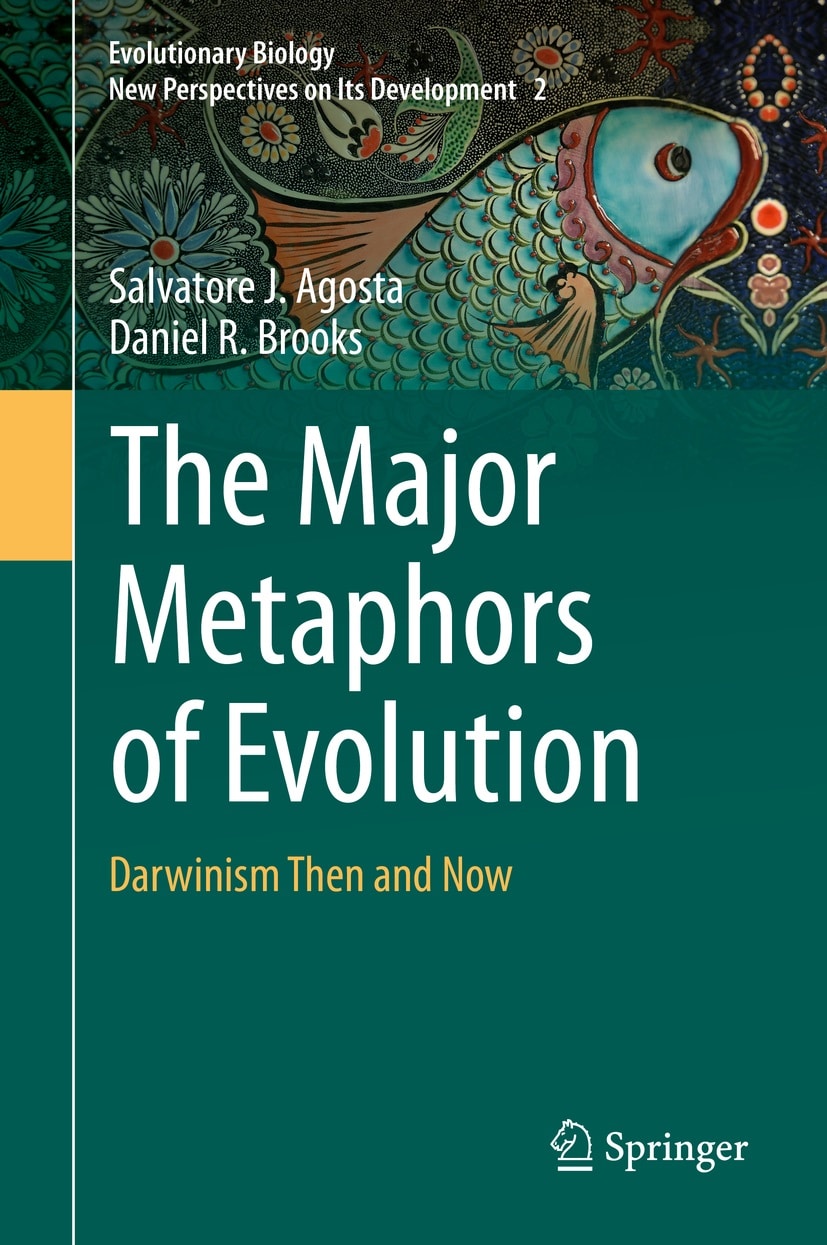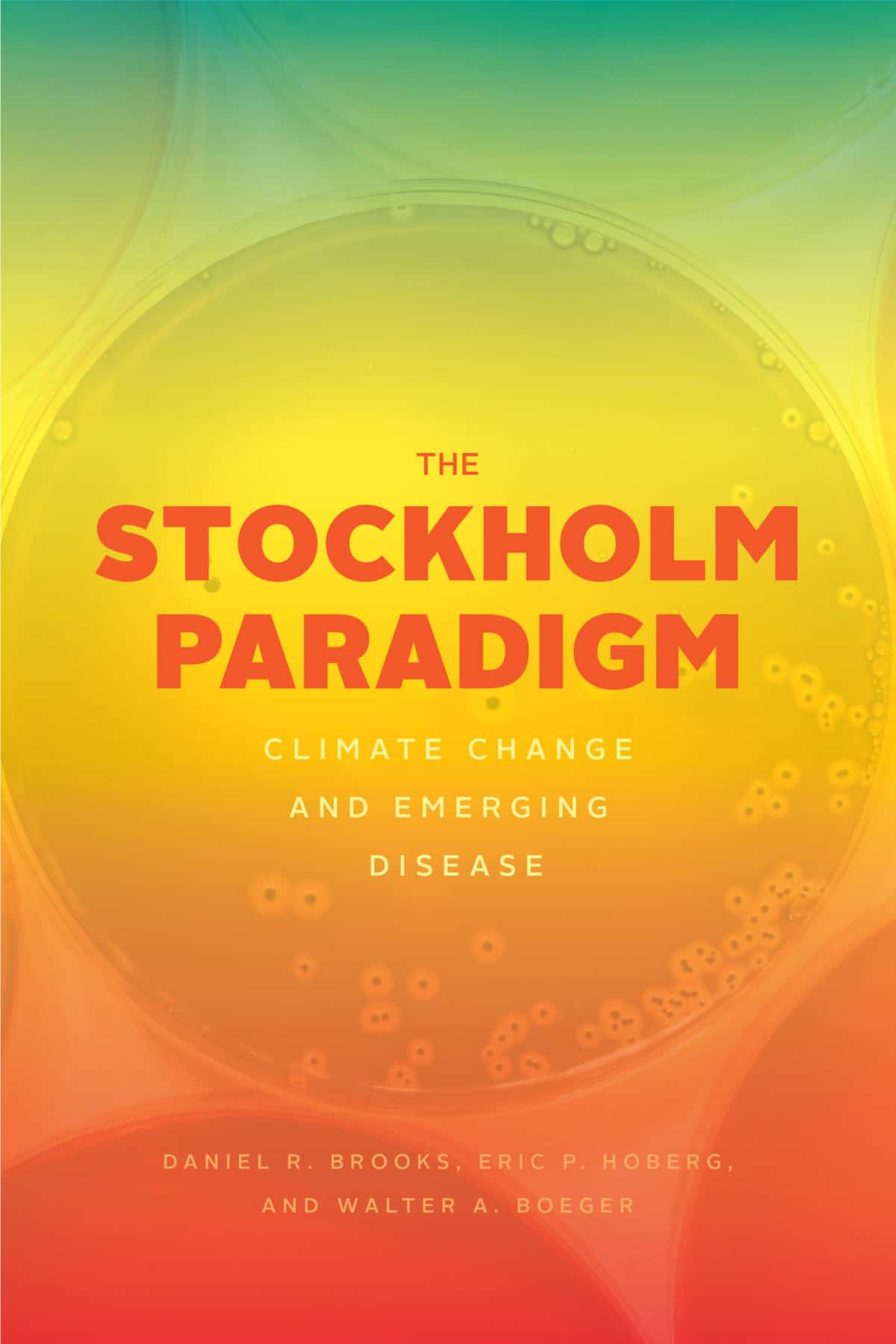“Humanity is facing an existential crisis due to a combination of factors including overpopulation, increased global travel, urbanisation, environmental and climate change, and emerging pathogens. These are all complex phenomena involving living systems. Our technological, modernised way of life may not survive,” said Salvatore J. Agosta, Associate Professor at Virginia Commonwealth University. “We need a coherent, integrated theory of evolution that we can put to work for humanity.”
In a live-event webinar, Agosta and STIAS fellow Daniel Brooks, Professor Emeritus at the University of Toronto, outlined their ideas of a more inclusive evolutionary framework as well as the way in which this can be used to predict emerging disease crises and thus ensure humanity’s future.
“Unfortunately humans tend to need to learn the hard way,” said Agosta. “We are starting to feel the pain – let’s hope it’s painful enough to cause the change to come from within. The future is full of conflict but we have to hope we can come out intact having made a paradigm shift.”
They explained that the unifying principle of biology is that all life is evolved life, which puts evolutionary theory at the forefront of dealing with all environmental problems. The main goal of biology should be to ‘put evolution to work’ for humanity.
Agosta started by explaining their framework which moves away from the traditional idea of the ‘commons,’ which is the material products and services required by living systems, to the new concept of the ‘evolutionary commons,’ which is the vast amounts of evolutionary potential living systems can generate, store and transmit via their inheritance systems.
“To understand the problem we can look at GDP, which is all about the maximum production of goods and services,” said Agosta. “We believe we can engineer our way out of any problem by finding solutions in more and more material goods and services for more and more people. This produces negative outcomes for society at large. Growing as fast as possible leads to more conflict.”
“We need a more evolutionary view of the commons.”
He explained that organisms have both inherited and potential information and, over time, potential capacity can grow and be used to exploit our survival.
“We need to strive for evolutionary persistence. This means being able to innovate to keep surviving when conditions change. To be evolvable. To cope with change by changing.”
He described it as not just survival of the fittest but “survival and persisting, coping and resolving. Being fit, not necessary the fittest. Being able to mount an adequate response to change. Having the capacity to cope with an unknown future.”
“The ‘evolutionary commons’ is therefore our storehouse of potential to cope with change,” he continued. “And to persist indefinitely, humanity must preserve and make use of as much evolutionary potential as possible.”
Listen to the lessons of evolution
He explained that it’s about using what is inherited to explore ecological opportunities. “It’s not about having the right adaptation at the right time. It’s about coping with change by having the potential to do something new with inherited information. It’s about tinkering with old traits, not developing new ones, and having the ability to both explore and exploit the surroundings for survival and persistence.”
“In a change of conditions the inherited system expands as some members explore new parts.”
“We need to identify the capacity for change stored in the evolutionary commons and use it wisely,” he continued. “Biodiversity is a bank account of evolutionary potential. We must identify this potential – human and non-human.”
Returning to economics, he emphasised that we need an economics of well-being as opposed to an economics of maximum growth. An economic system that would be best able to cope with change and is more compatible with the Darwinian emphasis on survival and persistence.
“The contemporary global economy is about who is making the most profit now. This is a survival of the fittest mentality. Measuring only growth is a poor way to measure capacity for survival. Growth and material wealth do not necessarily reflect how well people are living.
“Placing the highest value on short-term gains is a system of linear consumption which is making the problems worse. A circular economy is a better alternative that mimics how living systems work with more incentives for recycling, repurposing and re-using resources. Not make and dispose, but make and re-use. It might allow more technological humans to live more sustainably and also buy more time to find solutions to the problems we face.”
“But if we want technological humanity to be part of the future, it is not enough to let evolution take its course – we need to be proactive.”
Disease as an evolutionary feature
Nowhere is the need for proactivity more important than in the crisis of emerging diseases.
Brooks emphasised the need to put evolution to work to assist in such crises. He started by explaining the combination of conditions leading to the emergence of novel diseases specifically focusing on the interaction between climate change and disease.
“Climate change leads to movement which exposes species to pathogens they haven’t seen before,” he said. “Human agriculture, trade, travel and urbanisation all create massive opportunities for emerging disease. This is leading to the emergence of novel diseases plus the re-emergence of diseases we thought we had eradicated or contained.”
He pointed to cities as a major part of the problem. Cities are warmer, require constant movements of energy, water, goods and people, and are a safe environment for zoonotic disease. They are also characterised by high interdependency but low kinship, extreme divisions of labour and generally have a subclass of ‘invisible’, poor people who are unable to stay at home if they are sick and therefore become a source of transmission.
“COVID-19 has had its greatest impact in high-density urban settings.”
He pointed out though that emerging diseases are an evolutionary feature not a glitch.
“Pathogens don’t need new genetic capacities to adapt to a new host. They use their pre-existing capacities to exploit new opportunities – so they can emerge rapidly anywhere they find new hosts.”
Keeping the enemy outside the castle
However, Brooks believes it’s possible for us to be more proactive.
“New hosts are colonised using pre-existing capacities that are predictable allowing us to anticipate what a pathogen can do when it gets to a new opportunity space and is exposed to a new host.”
He highlighted the need to understand what pathogens are already there giving us time to reduce exposure and see the early warning signs before they cause an outbreak. This means finding the reservoir hosts.
“We have to find them before they find us by using the DAMA approach – document, assess, monitor, act.”
“Once a pathogen becomes established in a new host, new capacities may emerge that are not predictable and then crisis response becomes the only option.”
He described how the first signs of the COVID-19 crisis could be traced to nearly ten years previously in a combination of seemingly unrelated events – a novel coronavirus was identified in bats in Wuhan and shortly thereafter there was an African Swine Fever outbreak which reduced pork production and increased the consumption of wild meats. In publications of that period, markets were identified as a possible source of a zoonotic outbreak but the Chinese government and global community only responded when overtaken by events.
“The subsequent crisis caused by COVID-19 including the economic meltdown is the cost of not adopting a DAMA protocol.”
“We are out of time and unprepared,” he said, “but we can change that. We can directly put evolutionary principles to work to protect ourselves from the impact of emerging diseases.”
In discussion, Brooks and Agosta tackled the challenges of translating science into real-world policy and decision making.
“The academic setting is generally a poor mechanism for public outreach and activism,” said Brooks. “We need an emphasis on grassroots, bottom-up initiatives – to which the world is not always receptive.”
“There is a need to be proactive from the standpoint of evolutionary theory – anticipating the kinds of places and hosts where pathogens might go,” added Agosta. “We need to rethink how we think about evolution. We also need to completely rethink about what the most important goods and services are. The scientific community needs to provide the theory and be able to tell the world how to deal with it wisely. Evolutionary biology has a theory for part of the problem but the problem cuts across all disciplines and parts of society.”
“We are currently using up a lot of our fundamental fitness space,” he added. “We don’t have much wiggle room. There is lots of potential conflict in the system. We need to explore how we can make more fitness space while retaining the potential to do something new and different tomorrow.”
“There are countries that think they are too big to fail to take care of themselves – only they will be damaged by that,” said Brooks. “We will not survive unless we learn to co-operate even with people we don’t like.”
“Climate change and the resulting conflict and migration was predicted as far back as 1958 by Charles Elton. We have wasted time and must learn from that. Business as usual is not working. We have to explore new possibilities. We need to anticipate and adjust.”
“We have to decide now how much our grandchildren are worth to us,” he continued. “It doesn’t really matter what today’s politicians think. The next generation will have to cope with the worst of this and that’s where we must focus the message.”
Brook’s and Agosta’s latest book – The Major Metaphors of Evolution: Darwinism Then and Now is published by Springer see https://www.springer.com/gp/book/9783030520854
Brooks is also co-author of the 2019 book, The Stockholm Paradigm: Climate Change and Emerging Disease, much of which was written at STIAS during his 2017 fellowship, which outlines the DAMA approach in more detail.
Michelle Galloway: Part-time media officer at STIAS


